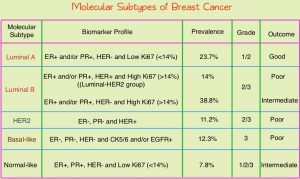SUMMARY: The American Cancer Society estimates that in 2022, about 62,210 people will be diagnosed with pancreatic cancer and 49,830 people will die of the disease. Pancreatic cancer is the fourth most common cause of cancer-related deaths in the United States and Western Europe. Unfortunately, unlike other malignancies, very little progress has been made and outcome for patients with advanced pancreatic cancer has been dismal, with a 5-year survival rate for metastatic pancreatic cancer of approximately 10%. Pancreatic cancer has surpassed breast cancer as the third leading cause of cancer death in the United States and is on track to surpass colorectal cancer, to move to the second leading cause of cancer related deaths in the United States.
Majority of patients with pancreatic cancer (80% of cases) are diagnosed at an advanced stage, and are not amenable to curative surgical resection, at the time of diagnosis. The current treatment regimens for advanced disease have proved ineffective, conferring a median Overall Survival (OS) of 6-8 months. In patients with pancreatic ductal adenocarcinoma, the main driver is the KRAS oncogene, which is mutationally activated in over 90% of cases, and is more common in older (50 years or more) and female patients. However approximately 8-12% of patients with pancreatic ductal adenocarcinoma do not harbor KRAS mutations.
Nimotuzumab is a humanized anti-EGFR monoclonal antibody, that binds to EGFR (Epidermal Growth Factor Receptor) and disrupts the interaction of the EGFR with its ligand, specifically blocking the EGFR signaling pathway, and mediating Antibody-Dependent Cellular Cytotoxicity (ADCC) and other immune effects, and inducing EGFR endocytosis and degradation. Nimotuzumab as a single agent showed activity in high grade brain tumors, and resulted in high rates of antitumor response in patients with locally advanced squamous cell carcinomas of the head and neck, when combined with radiation therapy. Nimotuzumab is approved in different countries for the treatment of Squamous Cell Carcinoma of Head and Neck (SCCHN), Glioma and Nasopharyngeal carcinoma.
NOTABLE is a prospective, double-blind, Phase III trial in which the efficacy and safety of Nimotuzumab in combination with Gemcitabine was compared with Gemcitabine alone, in patients with KRAS wild-type, locally advanced or metastatic pancreatic cancer. In this study, 92 patients with locally advanced or metastatic pancreatic cancer were randomly assigned to receive either Nimotuzumab 400 mg IV every week followed by Gemcitabine 1000 mg/m2 IV on days 1, 8, and 15 of every 28-day cycle or placebo plus Gemcitabine. Treatment was continued until disease progression or unacceptable toxicity. The treatment groups were well balanced. The median age was 56 years and approximately 56% had prior surgical management or treatment of biliary duct obstruction. The Primary endpoint was Overall Survival (OS), and Secondary endpoints included Progression Free Survival (PFS), Objective Response Rate (ORR), and Safety. The researchers envisioned that patients who did not need surgical management or treatment of biliary duct obstruction, typically would have better liver function without jaundice, and therefore would better tolerate chemotherapy. A subgroup analyses was therefore conducted based on whether the patients needed surgical management or treatment of bile duct obstructions prior to receiving chemotherapy.
The median Overall Survival was significantly longer in the Nimotuzumab/Gemcitabine group compared to those who received placebo plus Gemcitabine (10.9 months versus 8.5 months; HR=0.50; P=0.025). The one-year survival rate was 43.6% in the Nimotuzumab/Gemcitabine group versus 26.8% in the placebo-Gemcitabine group and the 3-year survival rate was 13.9% and 2.7%, respectively. The median Progression Free Survival was 4.2 months in the Nimotuzumab/Gemcitabine group compared to 3.6 months in the placebo plus Gemcitabine group (HR=0.56; P=0.013).
Among those patients who did not need surgical management or treatment of biliary duct obstruction, subgroup analyses showed significantly more survival benefit in patients without treatment of biliary obstruction (11.9 months versus. 8.5 months; HR=0.54; P=0.037) and among those with no surgical history (15.8 months versus 6.0 months; HR=0.40). Patients without treatment of biliary obstruction also had a significantly longer PFS (5.5 months versus 3.4 months; P=0.008) respectively. There was no statistical difference in the Objective Response Rates between the two treatment groups (P>0.05). Grade 3 adverse events in the Nimotuzumab/Gemcitabine group were neutropenia (11%), leukopenia (9%) and thrombocytopenia (7%). No Grade 4 adverse events were noted.
It was concluded that Nimotuzumab in combination with Gemcitabine, significantly increased Overall Survival and Progression Free Survival, in patients with K-Ras wild-type locally advanced or metastatic pancreatic cancer. This benefit was even more in patients who did not need surgical management or treatment of biliary duct obstruction.
Nimotuzumab combined with gemcitabine versus gemcitabine in K-RAS wild-type locally advanced or metastatic pancreatic cancer: A prospective, randomized-controlled, double-blinded, multicenter, and phase III clinical trial. Qin S, Bai Y, Wang Z, et al. J Clin Oncol. 2022;40(suppl 17):LBA4011. doi:10.1200/JCO.2022.40.17_suppl.LBA4011.

 Conventional clinical pathological factors have
Conventional clinical pathological factors have